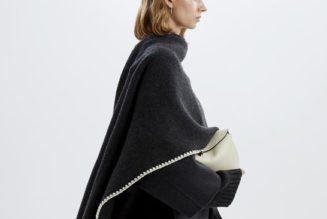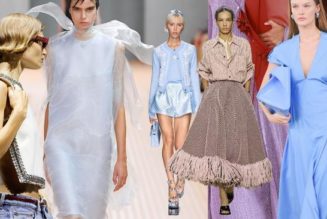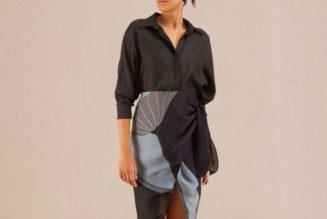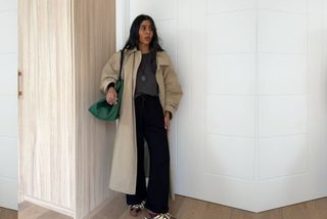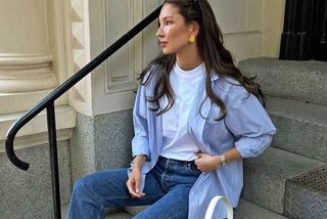
His connections to the city, however, have only deepened in the years since. In 1989, Hong Kong tycoon Silas Chou acquired the brand, propelling international expansion and turning it into a household name outside North America. Tommy Hilfiger is now part of PVH Corporation, an apparel group that also owns fellow American label Calvin Klein.
Clad in a varsity jacket, denim pants and white trainers of his own design, Hilfiger is the poster child for that kind of wholesome collegiate aesthetic that has made designers like him and Ralph Lauren the global ambassadors of American fashion.
Unlike other US fashion brands that have struggled to make it outside their country and to compete with the European brands that dominate the luxury industry, Hilfiger set out to expand globally very early on and is now a household name around the world.
Where are the 6 most iconic OG Victoria’s Secret Angels now?
Where are the 6 most iconic OG Victoria’s Secret Angels now?

“We started out as an American brand in menswear and then we added womenswear, childrenswear, accessories. We opened a store in the UK, which was very successful, and in Paris, Milan, Frankfurt, Hamburg and throughout Europe,” says the designer about his early foray into other markets. “We found that Europeans and Asians loved American brands. We continued to evolve the collections but keep the DNA, which is very American preppy, Ivy League, collegiate and classic American cool. We always wanted to keep that flavour. We never abandoned that, but we always changed the look and style according to the seasons and the trends of the moment.”
In the 90s, Tommy Hilfiger experienced huge growth in the US thanks to its embrace from the hip-hop community, with rappers and their fans lining up to get their hands on the baggy jeans, hoodies and baseball caps emblazoned with the now-iconic Tommy Hilfiger logo depicting a red, white and blue flag.

Music has always been at the core of the label’s DNA, explains Hilfiger. He adds that his dream as a young teenager growing up in New York state was to be a musician rather than a designer, and that the style of performers like The Beatles, Jimi Hendrix and The Who has always been an inspiration.
What was Usher like pre-fame? From babysitting Beyoncé to cribbing with Diddy
What was Usher like pre-fame? From babysitting Beyoncé to cribbing with Diddy
“At the very beginning, it was more centred around music and musicians. We collaborated with various people who were faces of the brand like Aaliyah, Usher, Britney Spears, Beyoncé, David Bowie and Iman, and we sponsored a Rolling Stones tour,” he says. “Then all the hip-hop kids started wearing the clothes and we owned streetwear. [Back then] nobody knew what streetwear was, but we knew what it was, because we knew what our customers wanted. All the young hip-hop and rap musicians loved the clothes and we listened to what they liked and wanted: oversized, big colours and big logos, and our business lifted in the 90s as a result. It was still preppy and sporty and it started spreading around the world.”

While the brand never abandoned the street vibe that luxury brands from left to right are now embracing with aplomb, it has shifted to a more refined aesthetic – as was evident at the autumn/winter 2024 show, named A New York Moment. Held at one of the city’s famous eateries – Grand Central Station’s Oyster Bar, in the heart of Midtown Manhattan – the show was an unabashed celebration of classic American cool and a homage to a city that still represents the American dream to people around the world.

Edison Chen, the Canadian-born Hong Kong actor, rapper and founder of label Clot, attended the event on the heels of a recent collaboration with Tommy Hilfiger. “It [brings back] memories of trying to buy a flag shirt as a young boy,” said Chen as American singer Jon Batiste performed at the end of the star-studded evening. Talking about his collaboration with Hilfiger, Chen said that he really enjoyed “finding that balance between our Asian vibe and his American heritage vibe; I’m in awe to just have our name mentioned next to Tommy Hilfiger”.

When looking at the current landscape of American fashion, it’s evident that building a brand of global scope that is equally desirable to consumers in places like India, Japan, France and Latin America is not as easy as it used to be. Hilfiger attributes his broad appeal to a basic formula that he believes is at the heart of American fashion.
“It’s [because I make] what people wear,” he says. “It’s very simple. I think that a lot of designers make it very complicated for themselves because they don’t make what people really wear. I wanted my place to be broad and reach a lot of people but still have a premium brand that was affordable and wearable.”
‘Bigger than fashion’? Why Taylor Swift will never sign with a luxury brand
‘Bigger than fashion’? Why Taylor Swift will never sign with a luxury brand

While the idea of being accessible is often looked down upon in an industry obsessed with grand statements and flights of fancy, Hilfiger has always championed commercial success, and his staying power after almost 40 years in the industry is testament to that.
As for what he would say to a young designer dreaming of making it big and building the next global American brand, he has a very simple piece of advice: “Once you find your place, stay consistent with it and never give up.”

